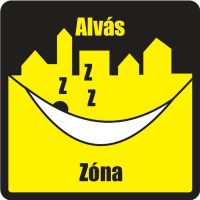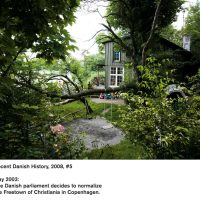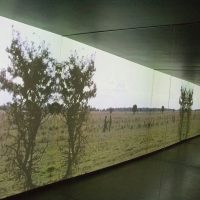Free Zone Budapest / Szabad Zóna Budapest, 2010
A művészek jóvoltából / Courtesy of the artists
Burning Car / Lángoló autó, still, 2008
A művészek jóvoltából / Courtesy of the artists
Recent Danish History / Dán közelmúlt, 2008
A Galleri Nicolai Wallner, Koppenhága, Dánia jóvoltából / Courtesy Galleri Nicolai Wallner, Copenhagen, Denmark.
Fotó / Photograph: Polfoto
What is Capitalism?/ Mi a kapitalizmus?, 2003
A művész jóvoltából / Courtesy of the artist
PowerGames wishes to challenge our understanding of nationality, tolerance, responsible social and political thinking, and the role of contemporary art in our changing world. The exhibition attempts to investigate and reflect on a number of themes, ranging from distribution of power in society and the social construction of identity, through economic and environmental issues to the boundaries between the public and the private space. It also attempts to address the issue of emerging nationalism, as well as the relation and interaction between history and memory and how they are constructed notions.
The works featured at the exhibition investigate the territories and borderlines as they appear in the social landscape of today while showing new, alternative scopes of action in our relation to society, challenging a number of power structures in various ways.
Michael Elmgreen & Ingar Dragset’s When a Country Falls in Love with Itself is the opening piece of the PowerGames exhibition. The image displays the Little Mermaid, Denmark’s national symbol. Sitting on a rock, instead of gazing across the sea, her eyes are diverted by her own reflection. The simple artistic intervention subtly indicates that self-celebration often comes to revolve around national symbols with the less fortunate consequence that the perspective on the world is narrowed down. The work points out the necessity of self-scrutiny and facing the past. This is crucial for a society to find its identity and determine its own future.
An attempt to face the past and to undergo self-scrutiny has been made in Jens Haaning’s work Recent Danish History (2008). The series of postcards is based on press images of eight events, selected from Danish history and public life between 1997-2008. The controversial events on the postcards represent various political and social issues, ranging from the inauguration of the Řresund Bridge connecting Denmark and Sweden, through Denmark’s participation in the wars in Afghanistan and Iraq to the history of the autonomous Freetown Christiania. The subjective selection of the artist problematizes the constructions of common history and collective memory influenced by the mainstream media.
The riots of 2007 in Copenhagen, depicted on the last piece of the postcard series, inspired the Superflex artist group to create their film work Burning Car (2008). Hundreds of young protesters clashed with police during the demonstrations organised against the clearance and demolition of alternative left-wing community house, Ungdomshuset. The film focuses on civil unrest today and the fascinations around this: How are these situations being represented in the media?
Tanja Nellemann Poulsen also deals with social tension and the role of the media, its power to influence public opinion and the public sphere. Her new installation is focusing on the phenomenon of radicalism and nationalism, which are on the upswing in Hungary as well as other countries throughout Europe. Please teach some new tricks to this old dog called nationalism – she says – still pointing out guiltiness on the ghost of Europe. Departing from the naďve perspective of news consumers, she focuses on the way extreme right events are distilled through the filters of the media.
Ann Lislegaard’s sound and light installation focuses on the painful effort of self-scrutiny and the reinterpretation of the past. Its intention is to make us face the lies of the past and clarify our role and position in the world. Slamming the Front Door (2005) is built on the last scene of Henrik Ibsen’s play A Doll’s House, when the protagonist, Nora, realizes that the idyll of her entire family life so far has been built on self deception and lies, and so she leaves her husband and children in order to try and find her true self liberated from the roles enforced on her. At the end of the play she slams the door and leaves walking towards the future with all the potential and dangers this act involves. But where does she go and what kind of emancipation can we expect?
What was once a novelty in Ibsen’s A Doll’s House is practically self-evident today: women’s independence in social and economic life. While Nora wants to find her place in society first of all as a human being, the Noras of today primarily want to assert themselves as women. This is very well demonstrated by Jens Haaning’s 33 Page 9-girls (2009/2010), considered by the artist as an ethnographical document of the Danish people and their relation to the female body. 33 Page 9-girls are selected from Ekstra Bladet tabloid paper. The photographs are accompanied by Hungarian translations of the interviews with them. The pictures, blurring the boundary between private and public spheres, seems pornographic at first, but observed with scrutiny it is a unique sociography that gives a picture of a segment of Danish society, of the reflections of these people on themselves, on sexuality, on their relationship and career opportunities.
Bosch & Fjord’s exhibition project, Free Zone Budapest (2010) focuses on the boundaries between private and public spaces within the cityscape, inviting debate about the public space and its functions: what is allowed, and what is not allowed in public space – and why/why not? The exhibition project involves some 50 signs that are placed, apart from in the exhibition space, throughout Budapest city centre – focusing on the 5th and 8th districts – following the suggestions of the visitors. The signs create free zones where one is allowed to deviate from conformity. Each zone surrounding a sign is defined by a white line. Inside the zone one is permitted to sleep, play, pray, listen to each other, profess the sexual diversity etc. This project is an encouragement to see art as something that affects everyday life, a tool that can help change our everyday life and give us influence on the community we live in.
Tue Greenfort too trusts that art is capable of inducing – if not revolutionary, at least gradual – changes in society. The idea that urges responsible thinking and direct action is often coupled with a satirical tone in his conceptual work. His installation Kaviar Bar (2007) explores the connections between the survival of endangered sturgeons and the control of the caviar trade. The work is closely related to the history of sturgeons once so important in Budapest life and culture, as a city on the River Danube, with special regard to the issues concerning the habitats and fishing of the beluga sturgeon in Hungary, and is also linked to local environmentalist programs for saving sturgeons. Adjusting to the context of PowerGames, Tue Greenfort prepared an entirely new version of the installation. The Kaviar Bar is marked by a neon sign and a surreal fish head moulage, referring to historical and environmental issues surrounding the beluga sturgeon, while the projection intends to reflect social and market (power) relations, documenting the artist’s provocative intervention.
Superflex’ film of four episodes addresses the changes of financial power relations in a singular manner. The Financial Crisis (Session I-IV) (2009) reflects on the financial crisis and meltdown from a therapeutic perspective. A hypnotist guides us through our worst nightmares to reveal the crisis without as the psychosis within. During four sessions we can experience the fascination of speculation and power, fear, anxiety and frustration of losing control, economic loss and personal disaster.
What is Capitalism? – asks Katya Sander the passers-bys on a field stretching out into the horizon resembling the typical setting for movies of the ‘Western’ genre. Although all of the responses are different, describing different relations, all of the passers-by speak in normal everyday language and all of them express the difficulty of putting ‘capitalism’ into language. The video installation from 2003 is referring to the impossibility of defining the nature and notion of the world’s prevailing economic system.



